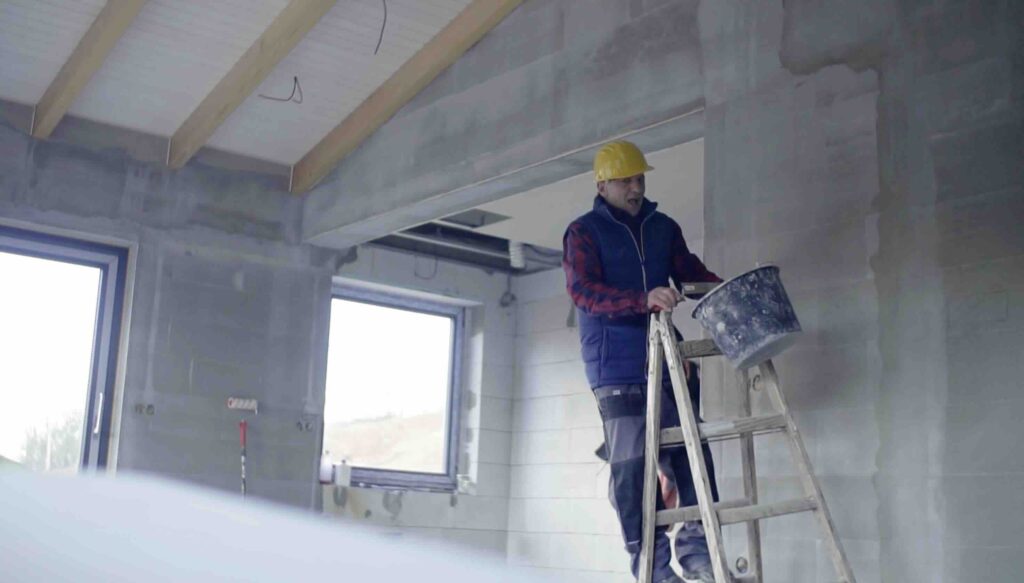Ladders are a fundamental tool in construction trades, serving as a simple yet essential means for reaching elevated areas. Their ubiquity across various trades and businesses underscores their importance. In this discussion, we'll delve into the history of ladders, their invention, popularity, advantages and disadvantages, as well as the risks and safety challenges associated with their use.
History of Ladders
The history of ladders stretches back thousands of years, with the earliest documented ladders appearing in a Mesolithic rock painting in the Spider Caves in Valencia, Spain, which is estimated to be around 10,000 years old. These early ladders were made from tree trunks with notches cut out for footholds. As civilizations evolved, so did ladder designs, incorporating materials like wood, bamboo, and eventually metals for increased durability and strength.
Invention and Evolution
It's difficult to attribute the invention of the ladder to a single individual or civilization, as ladders were independently developed by many cultures around the world. The basic concept of a ladder—a tool to reach higher places—is simple and was a natural development in many societies to overcome vertical challenges.
Over time, ladders have evolved from simple, notched logs to sophisticated, engineered designs with a variety of types (such as step ladders, extension ladders, and telescopic ladders) and materials (including wood, fiberglass, and aluminum), each suited to specific tasks and environments.
Popularity
The ladder's popularity stems from its fundamental utility. It is a versatile, portable, and relatively inexpensive tool that enables access to heights and depths which would otherwise be inaccessible or require more complex solutions like scaffolding or powered lifts. Ladders are used in a wide range of settings, from construction sites and industrial environments to households and commercial properties.
Advantages
- Versatility: Ladders can be used for a multitude of tasks across different trades and settings.
- Portability: Most ladders are lightweight and easy to transport, making them ideal for tasks that require mobility.
- Simplicity: Ladders are straightforward to use, with minimal setup time compared to other access equipment.
- Cost-effectiveness: Compared to other lifting or height-access equipment, ladders are relatively inexpensive.
Disadvantages and Risks
- Safety Risks: Falls from ladders can result in serious injuries or fatalities. The risk increases with height and when ladders are used improperly.
- Limited Reach and Stability: Ladders have a limited height range and can be unstable, especially on uneven surfaces or when not used according to safety guidelines.
- Physical Strain: Prolonged use can lead to musculoskeletal strain, particularly in the back, shoulders, and arms. In addition, safety requirements lead to step widths becoming deeper, which leads to greater weight.
Getting up and down, moving, using materials and tools at the same time makes working with ladders at ceiling heights tiring and accident-prone
Safety Challenges
Ensuring ladder safety involves addressing both the equipment's integrity and the behavior of its users. Key safety challenges include:
- Proper Selection: Choosing the right ladder for the task, considering the height, weight capacity, and environment.
- Inspection and Maintenance: Regularly inspecting ladders for damage and wear, and performing necessary maintenance or replacement.
- Training: Educating users on proper ladder selection, setup, and climbing techniques to prevent accidents.
- Safe Use Practices: Following best practices for ladder use, such as maintaining three points of contact, not overreaching, and using stabilizers or securing the ladder when necessary.
Are ladders outdated?
Ladders were an essential tool in the construction industry, offering a mix of simplicity, versatility and efficiency. However, their benefits also come with risks, particularly in terms of safety and efficiency. Addressing these challenges through proper ladder selection, maintenance and user training is critical to minimizing accidents and ensuring the safe and effective use of ladders in any trade. The use of ladders will be challenged by technology.
Send us a message
We look forward to exchanging ideas with you and are interested in your perspective on things.

